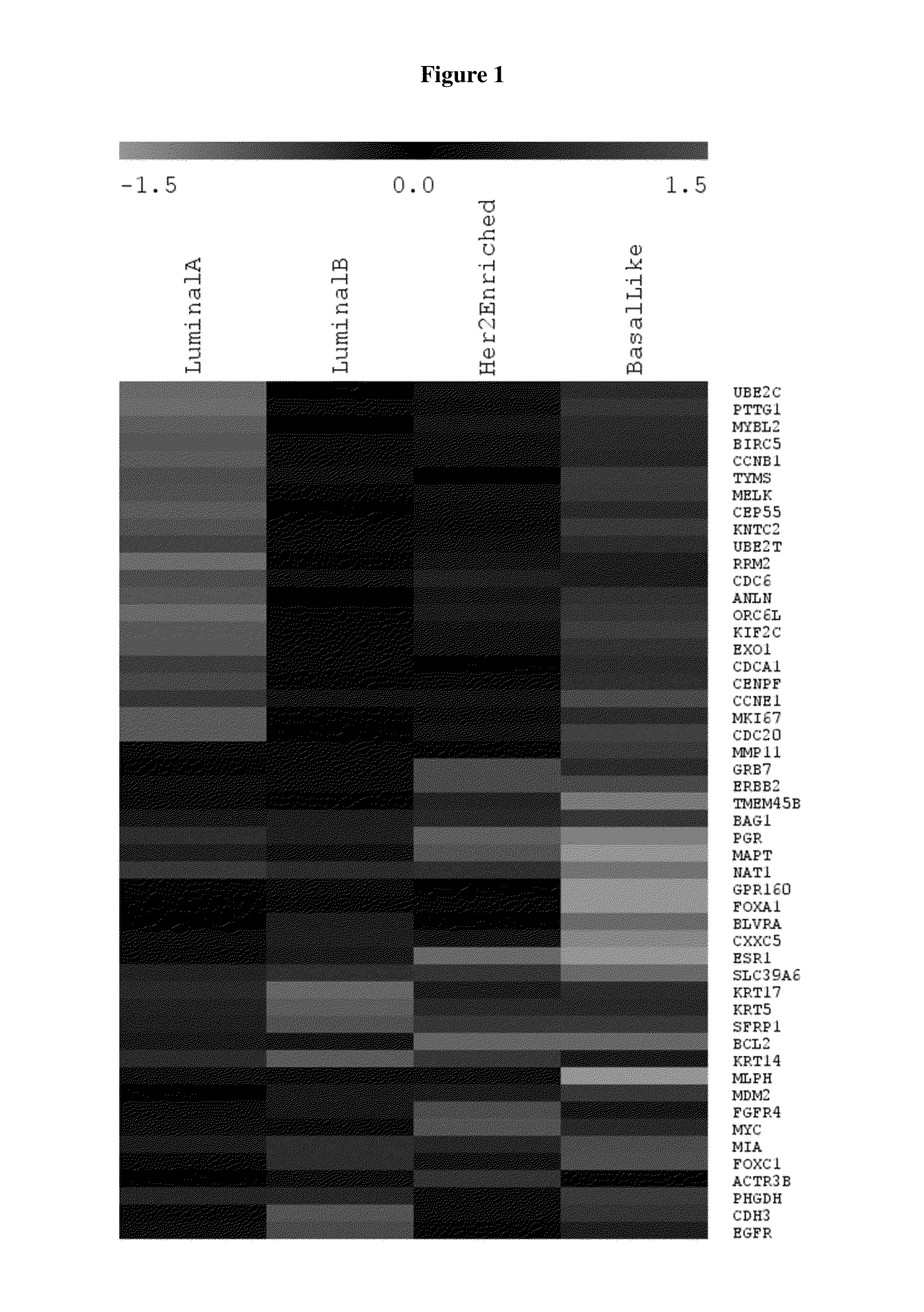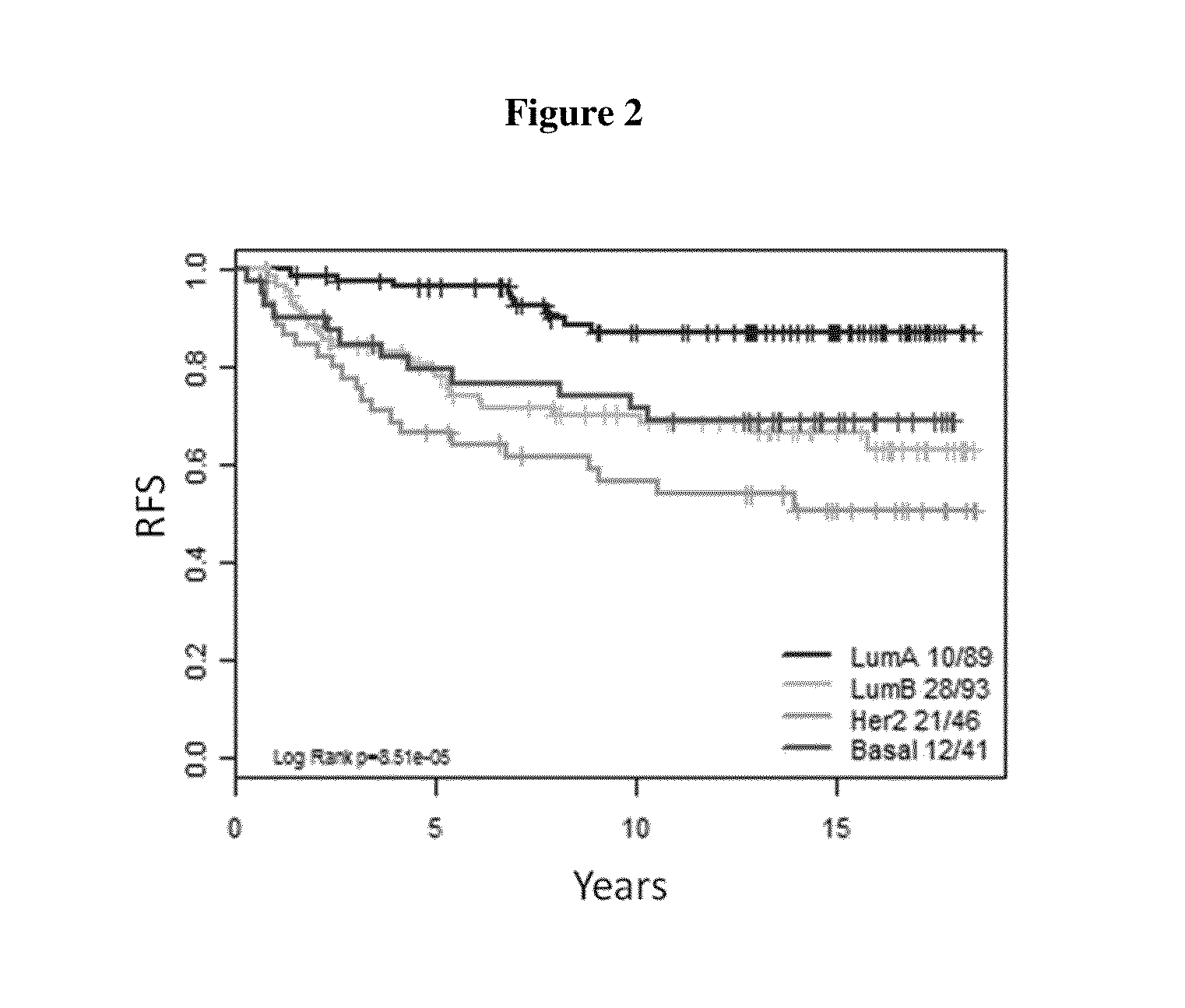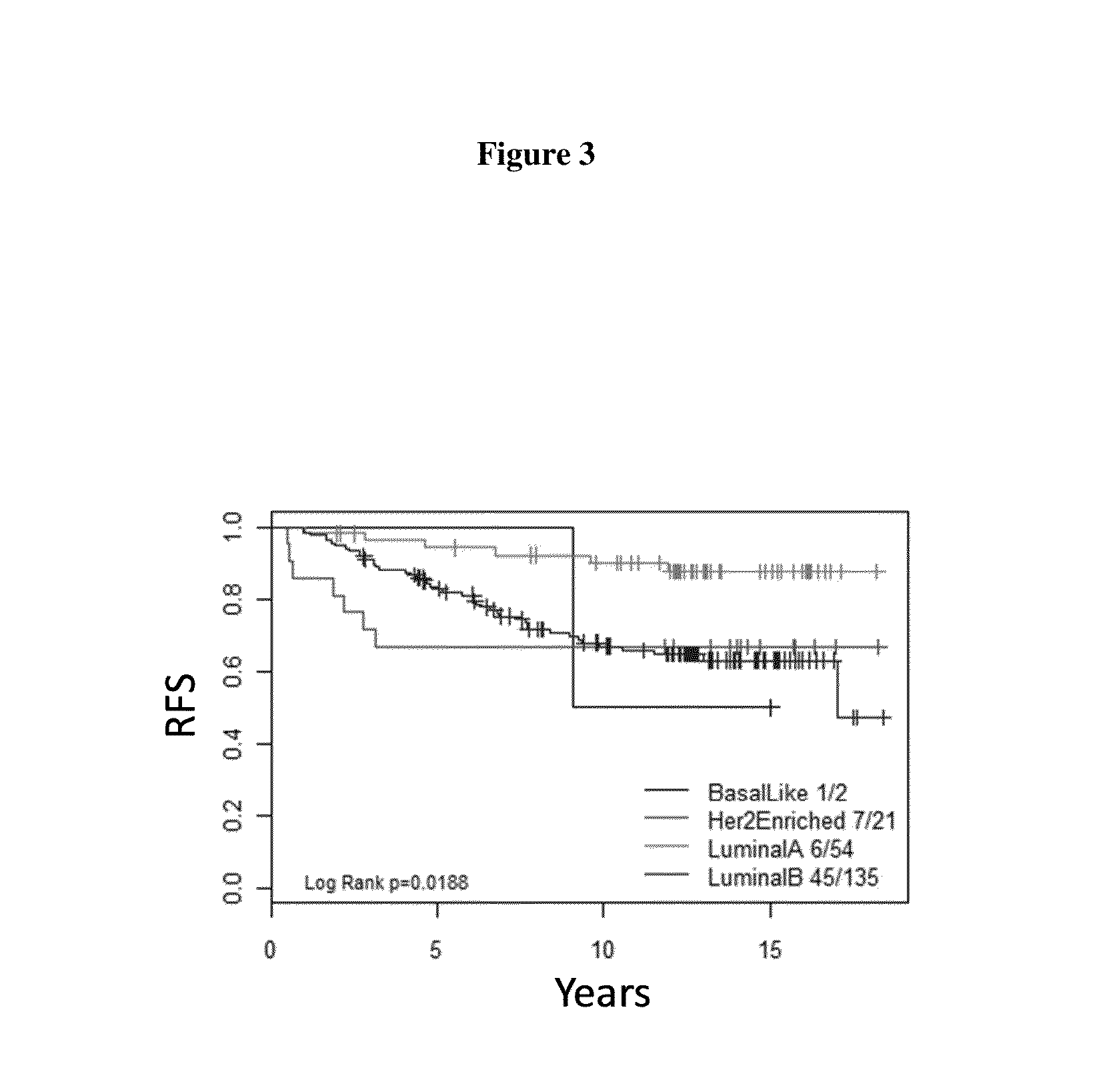NANO46 Genes and Methods to Predict Breast Cancer Outcome
- Summary
- Abstract
- Description
- Claims
- Application Information
AI Technical Summary
Benefits of technology
Problems solved by technology
Method used
Image
Examples
example 1
NANO46 Subtyping Test
[0180]FIG. 5 outlines the assay processes associated with the Breast Cancer Intrinsic Subtyping test. Following RNA isolation, the test will simultaneously measure the expression levels of 46 target genes plus eight housekeeping genes in a single hybridization reaction using an nCounter CodeSet designed specifically to those genes. For example, the housekeeping genes described in U.S. Patent Publication 2008 / 0032293, which is herein incorporated by reference in its entirety, can be used for normalization. Exemplary housekeeping genes include MRPL19, PSMC4, SF3A1, PUM1, ACTB, GAPD, GUSB, RPLP0, and TFRC. The housekeeping genes are used to normalize the expression of the tumor sample. Each assay run also includes a reference sample consisting of in vitro transcribed RNA's of the 58 targets for normalization purposes.
[0181]FFPE Tissue Review / Procurement and RNA Extraction: The Breast Cancer Intrinsic Subtyping Test will use RNA extracted from Formalin-fixed, Paraff...
example 2
Clinical Validation of the NANO46 Risk of Recurrence (ROR) Score for Predicting Residual Risk of Distant-Recurrence (DR) after Endocrine Therapy in Postmenopausal Women with HR+ Early Breast Cancer (EBC): An ABSCSG Study
[0185]The aim of the study is to assess the performance of the ROR score in predicting distal recurrence for postmenopausal patients with hormone receptor positive early breast cancer (HR+ EBC) treated with tamoxifen or tamoxifen followed by anastrozole when the NANO46 test is performed in a routine hospital pathology lab. Does the ROR score add prognostic information (Distant RFS) beyond the Clinical Treatment Score in all patients (CTS includes: nodes, grade, tumor size, age, treatment)? Do the ROR-based risk groups at prognostic information (Distant RFS) beyond the Clinical Treatment Score in all patients?
[0186]Study Overview: 3,714 patients were enrolled in a ABCSG8. Patients were postmenopausal women with HR+ EBC (node negative and note positive), grade one or t...
PUM
| Property | Measurement | Unit |
|---|---|---|
| Current | aaaaa | aaaaa |
| Size | aaaaa | aaaaa |
Abstract
Description
Claims
Application Information
 Login to View More
Login to View More - R&D
- Intellectual Property
- Life Sciences
- Materials
- Tech Scout
- Unparalleled Data Quality
- Higher Quality Content
- 60% Fewer Hallucinations
Browse by: Latest US Patents, China's latest patents, Technical Efficacy Thesaurus, Application Domain, Technology Topic, Popular Technical Reports.
© 2025 PatSnap. All rights reserved.Legal|Privacy policy|Modern Slavery Act Transparency Statement|Sitemap|About US| Contact US: help@patsnap.com



